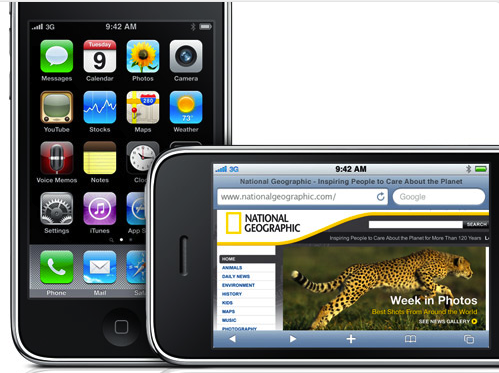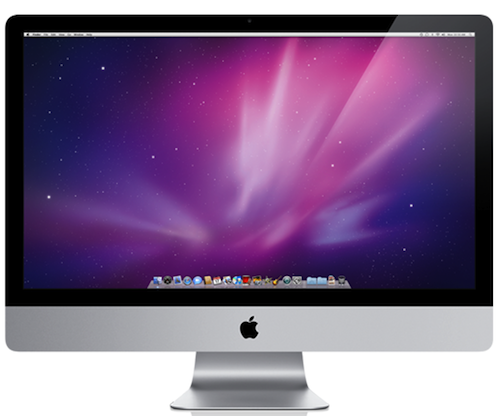Accounting change lifts Apple fiscal Q1 2010 results to over $15.6 billion
Apple kicked off its 2010 fiscal year with strong first fiscal quarterly earnings -- less than two days before announcing its "latest creation" that bloggers, the news media and the tech community can't seem to stop blabbering about.
During a conference call today, Apple CFO Peter Oppenheimer described the quarterly results as Apple's best ever. However, Apple instituted new reporting rules for this quarter's results. The accounting change gave Apple's results huge lift, which many news sites credited to record Mac and iPhone sales. Apple sales were inline with analyst expectations and recent growth trends. If not for the accounting changes, Apple's results would more likely have come in slightly above Wall Street's consensus estimates.
Previously, Apple deferred a significant portion of iPhone, iPod touch and Apple TV revenue under older subscription accounting rules. The Financial Accounting Standards Board revised the rules in September. The accounting change means that Apple can immediately recognize iPhone/iPod touch and Apple TV revenue rather than deferring much of it for 24 months.
The new accounting method explains why Apple exceeded analyst consensus by such a huge amount -- more than $3.5 billion. Apple revised two years of results in support of the accounting change. This revision added at least another $110 million revenue previously deferred over the past 24 months. So the quarter got two lifts:
- Previously unrecognized revenue calculated at $25 for every iPhone sold over two years, according to Oppenheimer (He didn't say how much total for Apple TV, just $10 per unit).
- Revenue recognized in this quarter that in the past was deferred. By comparison, Apple revenue jumps dramatically, but it's more because of accounting.
Q1 2010 by the Numbers
For fiscal first quarter, Apple reported $15.68 billion revenue and net profits of $3.38 billion, or $3.67 a share, under the new reporting method. A year earlier, Apple reported revenue of $11.88 billion and $2.26 billion net quarterly profit, or $2.50 per share. Fiscal first quarter ended Dec. 26, 2009.
Three months ago, Apple forecast revenue between $11.3 billion and $11.6 billion, with earnings per share ranging between $1.70 and $1.78. Analyst estimates were much higher than Apple guidance: $12.06 billion average revenue consensus and $2.07 earnings per share. Apple blew past the Street.
For fiscal 2010 second quarter, Apple forecasts between $11 billion and $11.4 billion in revenue, with earnings per share ranging between $2.06 and $2.18.
In a statement, Apple CEO Steve Jobs declared "if you annualize our quarterly revenue, it's surprising that Apple is now a $50+ billion company."
Apple's gross margin was 40.9 percent, up from 37.9 percent a year earlier. International sales accounted for a stunning 58 percent of revenue. Apple ended the quarter with $39.8 billion in cash, up from $34 billion three months earlier.
Q1 2010 Revenue by Product
- Desktop: $1.7 billion, up 62 percent from $1 billion a year earlier.
- Portables: $2.76 billion, up 9 percent from $2.52 billion a year earlier.
- iPod: $3.4 billion, up 1 percent from $3.37 billion a year earlier.
- Music: $1.16 billion, up 15 percent from $1.01 billion a year earlier.
- iPhone: $5.6 billion, up 90 percent from $2.9 billion a year earlier.
- Peripherals: $469 million, up 21 percent from $387 million a year earlier.
- Software & Services: $631 million, up 4 percent from $606 million a year earlier.
iPhone. Apple shipped -- what company executives really mean by sold -- 8.7 million iPhones worldwide during fiscal first quarter. Apple shipments into the channel are usually several million units higher than numbers released by Gartner, which measures actual sales. A year earlier, Apple shipped 4.4 million iPhones. Wall Street analyst estimates ranged from about 8.8 million (consensus) to over 9 million units -- meaning iPhone shipments fell below expectations. However, iPhone revenue rose 90 percent year over year, giving the biggest boost to Apple's quarter. The smartphone accounted for about a quarter of total Apple revenue, with a chunk of the lift coming from the implementation of the new accounting method.

Interesting aside: After more than 2.5 years of nearly continuous marketing, Apple stopped airing iPhone TV commercials coming into 2010. The marketing change could signal a new advertising campaign either related to the rumored tablet, new iPhone OS version or both.
In a blow to Apple, today, IDC predicted that Nokia's Symbian OS would lead in global market share in 2013, while Google's Android -- and not iPhone OS -- would come in second. IDC predicted that Android shipments would reach 68 million units by 2013, up from 690,000 in 2008. Global smartphone shipments would reach 390 million units. However, IDC's data doesn't account for other devices running iPhone OS -- the iPod touch and, presumably, Apple's rumored tablet.
Q1 2010 Unit Shipments by Product
- Desktop: 1.2 million units, up 70 percent from 728,000 units a year earlier.
- Portables: 2.13 million units, up 18 percent from 1.8 million units a year earlier.
- iPod: 21 million units, down 8 percent from 22.7 million units a year earlier.
- iPhone: 8.7 million units, up 100 percent from 4.4 million units a year earlier.
Computers. Once again, Mac sales continued to defy the economy's downward pull -- and that of Windows 7, which Microsoft launched in late October. Apple shipped 3.36 million Macs during the quarter, up from 2.5 million units a year earlier and 3.05 million units during fiscal Q4 2009. Wall Street analyst Mac shipment projections ranged from about 2.79 million to 3.32 million shipments worldwide.
Nearly two weeks ago, analyst firms Gartner and IDC reported strong sequential declines for US Mac market share. In the United States, Gartner said that Apple shipped 1.48 million Macs, up 23.3 percent year over year. Market share declined year over year and sequentially -- dramatically. IDC put Apple's US share at 7.5 percent, down from 8.8 percent in fiscal Q4 2009 and 7.7 percent in fiscal Q1 2009. Both analyst firms ranked Apple fifth in US market share, a one-rank decline below Toshiba. The numbers suggest that at least in the United States Windows 7 sapped some Mac sales momentum during the holiday quarter.

Q1 2010 Revenue by Geography
- Americas: $6.09 billion, up 15 percent from $5.3 billion a year earlier.
- Europe: $5.02 billion, up 40 percent from $3.6 billion a year earlier.
- Japan: $783 million, up 57 percent from $498 million a year earlier.
- Asia Pacific: $1.81 billion, up 142 percent from $750 million a year earlier.
- Retail: $1.97 billion, up 13 percent from $1.7 billion a year earlier.
iPod. Apple shipped 21 million iPods during fiscal first quarter, down from 22.7 million a quarter earlier and, unsurprisingly, up from 10.2 million in fiscal Q4 2009. Analyst consensus for Q1: 20.4 million units. While units decline, revenue rose 1 percent year over year, suggesting a higher sales mix favoring iPod touch, which sales grew 55 percent.
Q1 2010 Unit Shipments by Geography
- Americas: 1.9 million units, up 30 percent from 912,000 units a year earlier.
- Europe: 1.07 million units, up 6 percent from 795,000 units a year earlier.
- Japan: 105,000 units, up 6 percent from 99,000 units a year earlier.
- Asia Pacific: 313,000 units, up 54 percent from 203,000 units a year earlier.
- Retail: 689,000 units, up 34 percent from 515,000 units a year earlier.
Retail. Revenue rose 13 percent year over year, with Apple retail stores selling 689,000 units, compared to 515,000 a year earlier. Apple opened 10 new stores in the quarter, for a total of 283 retail outlets in 10 counrties. There was an average 278 stores open in the quarter, with average revenue of $7.1 million compared to $7 million a year earlier.
